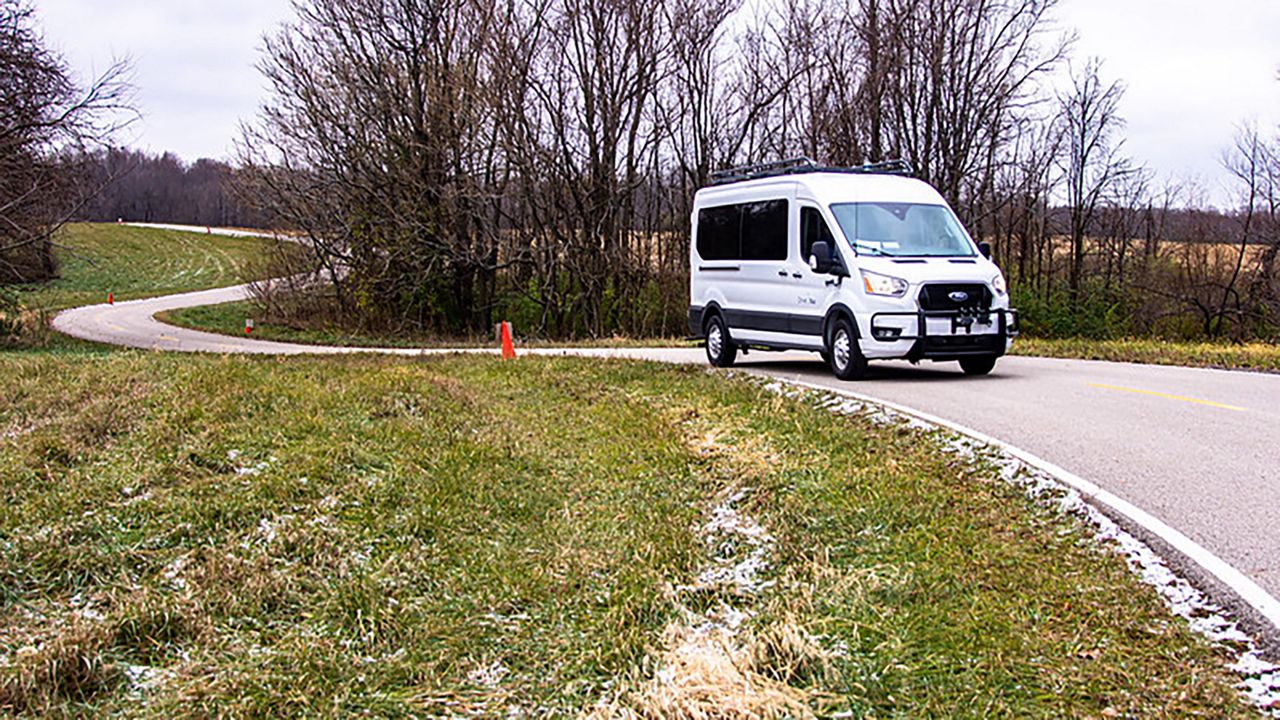OHIO — Automated vehicles are being deployed on Ohio's rural roads to adapt smart technologies for companies, according to DriveOhio, an Ohio Department of Transportation initiative.
DriveOhio said in a press release it'll help see how the vehicles get around with curves, hills and other obstacles urban areas may not have. They'll be deployed in the central and southeastern parts of the state. Each vehicle will have an individual in driver's seat, ready to take over if needed.
As part of the first of two deployments, three equipped passenger vehicles will travel on divided highways and rural two-lane roads in Athens and Vinton counties. This will include areas with construction as well as areas with limited visibility. These vehicles will have Automoutuff technology, which will allow the vehicles to brake, steer or accelerate as needed. DriveOhio said they will be deployed for a year.
“The rural Appalachian area surrounding Ohio University would greatly benefit from using autonomous vehicles to deliver goods and transport people, but the road conditions are very different than urban and suburban regions,” said Jay Wilhelm, associate professor of Mechanical Engineering at Ohio University. “This project gives us an incredible opportunity to test automated vehicles in rural areas and gather data to demonstrate the unique challenges and work towards solutions. Our goal is to bridge the technology gap in rural Appalachian communities so automated vehicles can improve quality of life throughout the region.”
Then in central Ohio, there will be two 53-foot platoon-equipped tractor-trailers and they will have technology that will allow them to travel close together at highway speeds. DriveOhio explained that when connected, the lead vehicle controls the speed, with the other vehicle precisely matching braking and acceleration. These will be deployed on U.S. 33 on a stretch of 35 miles, which is also known as the Smart Mobility Corridor because it's designed for testing such vehicles.
These vehicles have already been tested at the Transportation Research Center Inc.'s (TRC) 4,500-acre proving grounds in East Liberty, Ohio, according to DriveOhio. The project is funded in part by a $7.5 million grant from the U.S. Department of Transportation. The goal of the project, which focuses on 32 counties in Ohio's rural Appalachian region, is to improve safety on the roads in rural settings.
DriveOhio said it's the most comprehensive testing effort on rural roads in the U.S. so far.
“This project holds great promise for the future of transportation and the economic wellbeing of rural communities, while strengthening Ohio’s historic reputation as a world leader in transportation safety and innovation,” said Brett Roubinek, president and CEO of TRC Inc.



